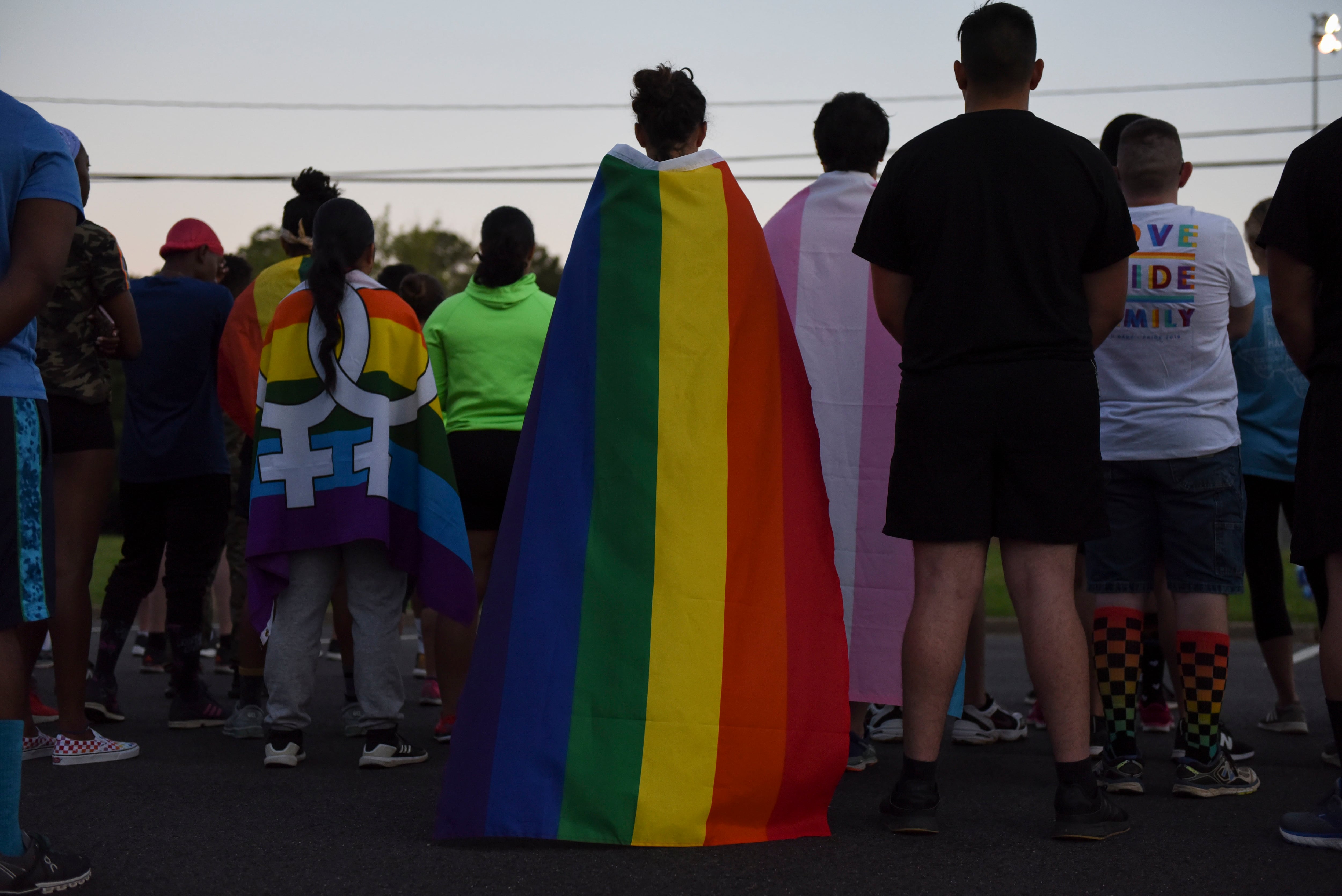A cave rescue team said the gold mine where Erin Corwin was found is little more than "an anonymous hole in the desert" that has not been worked for decades and is not marked on any maps.
The mine, a 100-foot vertical shaft, drops abruptly from an open desert plain. It sits on federal land southeast of Twentynine Palms, surrounded by hundreds of other mines. Toxic air fills the shaft.
This was nearly Corwin's grave.
If not for the relentless searching of the San Bernardino County Cave and Technical Rescue team, Corwin's body would have lain at the bottom of this mine until there was nothing left to find. Instead, the rescue team discovered her body on Aug. 16, seven weeks after she vanished in the high desert.
"There was a sense of relief that we had found something," Sonny Lawrence, a member of the rescue team, said Monday. "But we knew we were not done."
Specialized firefighters were called in the following day to recover Corwin's body. The recovery of her body allowed authorities to arrest Christopher Lee, who has now been charged with murder. Lee, who was recently extradited from Alaska, pleaded not guilty in his first California court appearance at the Joshua Tree courthouse on Tuesday afternoon.
Corwin, 19, was a Marine wife who vanished on June 28. She left her apartment on the Twentynine Palms Marine base about 7 a.m., telling her husband, Cpl. Jonathan Corwin, that she was headed to Joshua Tree National Park.
Erin's disappearance launched a massive search that spanned more than 300 square miles of desert. Hundreds of volunteers helped the San Bernardino County Sheriff's Department search for the missing woman, but as the search dragged on, hope dwindled.
The Desert Sun spoke to several members of the cave rescue team on Monday evening, during a vigil held for Erin in Twentynine Palms. Many mourners tied purple ribbons to a fence in the corner of Luckie Park, saying goodbye to Erin, then shook the hands of the cave team members, thanking the men who found her.
The cave team was assisted by Doug Billings, a cave and mine specialist, who cataloged mines to assist in the search for Erin. Billings said Monday that detectives showed him an area where they believed Erin may be found, then he drafted a map of the mines in the region, highlighting the mines that were most likely places to try to hide a body.
"There was so much evidence pointing in so many directions, I decided I was going to catalog every mine within a reasonable area," Billings said. "It ended up being 600, and still climbing, and these were just the large and modern mines. … But really, even with blind sight, we hit it almost dead on right in the beginning."
More than 100 mines were explored as part of the search for Erin, but many of these mines were searched before detectives showed the cave team where to prioritize. The sheriff's department used some form of electronic tracking — likely pings from a cell phone — to zero in on the area of the Rose of Peru Mining District, the Brooklyn Mining District and the Los Angeles Mining District.
Some mines were searched with dogs, who sniffed for the scent of human remains, and others were searched with customized camera rigs, lowered into the dark on cables. A few mines were short or shallow, and could be explored by a single team member in a matter of minutes. Other mines were large, requiring a spelunker to climb or rappel into the depths, combing every inch for clues.
In the end, Billings' theory turned out to be correct. Erin's body was found in one of the highlighted mines in the highest prioritized area. It was a gold mine, dug sometime in the '70s, last worked in the '80s, Billings said. The mine is not on any mine map because the map was drawn up in the late '60s.
"It's just an anonymous hole in the desert, with no name," said John Norman, one cave team member. "It requires four-wheel drive just to get into that area."
"And on the way to getting there, there were a dozen mines just like it," Lawrence added. "It is like a table, perfectly flat, and then all of the sudden, there is a hole in the ground 100 feet deep."
The sheriff's department initially said Erin was found at the bottom of a 140-foot deep mine. But the cave team said Monday night that the mine was actually about 100 feet deep and that the initial reports were based on inaccurate early estimates.
The mine descended as a deep vertical shaft that sloped slowly to one side, making it impossible to simply lower a camera in from the top. Instead, the team lowered one of its searchers on a rope and, as he dangled partway down the shaft, he lowered a camera and a powerful light to the bottom.
Ultimately, two cameras and three rescuers went into the mine. Each rescuer wore a mask to protect themselves from "bad air" at the bottom of the mine, but the cave team couldn't be sure the mask would be enough.
"It was scary, because the air was questionable," Lawrence said. "But because of the shape of the bottom, we couldn't put a camera all the way down. A person had to go down, and ultimately had to get close enough to see Erin to make the call. … The third person down was only (a few feet) from Erin and could make a positive identification that it was a body."
On Tuesday morning, Sheila Braden, the mother of Jonathan Corwin, said her family was unspeakably thankful for the efforts of the cave team, the fire department and all other officials and volunteers who participated in the search for Erin.
"Their efforts will give us the closure we need and enable justice to be served for Erin," Braden said. "Simple words cannot express our gratitude. God bless them all."
Authorities believe that Lee and Erin were having an affair and that Lee may have killed her because he was concerned that his wife, Nichole, would discover his infidelity.
According to high desert court documents, filed as part of the investigation into the disappearance, Erin had planned to go hunting with Lee on the day she disappeared.
When questioned by law enforcement, Lee denied that he was with Erin on the day she disappeared. However, authorities later uncovered evidence they argue ties him to the crime.
After Erin's car was found outside the Twentynine Palms base, detectives found nearby tire tracks that matched the tires on Lee's Jeep. Authorities also found ammunition in the Jeep, which matched the spent bullets found at the bottom of the mine where Erin was found.
Lee has been charged with first-degree murder, but could face an additional murder charge if an autopsy confirms that Erin was pregnant at the time of her death.
The Lees and the Corwins were neighbors who lived next door to each other in an apartment building on Marine Corps Air Ground Combat Center in Twentynine Palms.





